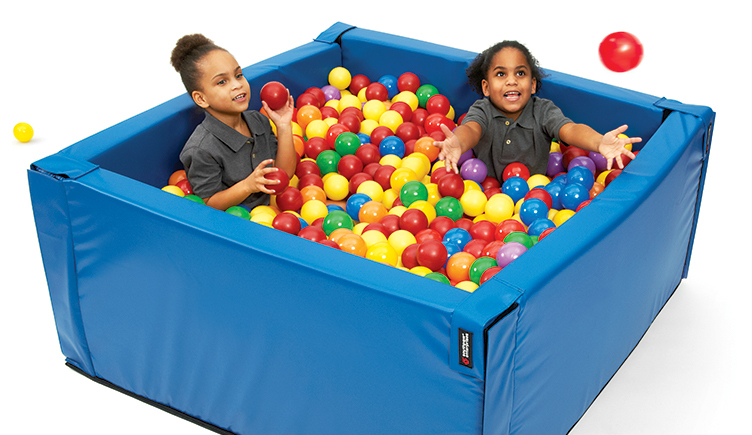Providing sensory integration therapy in the clinic requires lots of attention to the physical design of the space. This includes safety, hardware for hooks, options for suspension, play equipment and lighting, even the colors on the wall. Of course, the physical space is just part of the therapeutic environment and the relational or social space deserves its own intentionality. Most sensory gyms are shared spaces, where two or even three sessions can happen at the same time. While it is true that using the space this way is more economical you may be surprised to learn that this is not the driving reason for sharing space. We share spaces because of the therapeutic opportunities it offers our clients, and what better time of year to unpack this than during the winter holidays.
Social Opportunities
One of the first and most obvious reasons for sharing the sensory gym with others is because it helps to build social confidence and the nuanced skills needed to form and sustain relationships. No amount of protocolized social skills training can replace the nuanced and rich opportunities provided by organic and spontaneous interactions with others. In the sensory gym this might mean: asking others if they want to join our game, or if we can join in theirs; requesting a turn on the trapeze; asking to share; and negotiating changes in the environment such as temperature and music. As these opportunities come up and new friendships are formed, the adults in the space can provide scaffolding for success. This builds confidence and competence through natural opportunity and allows our clients to self-organize around these experiences. In other words, the organic opportunities for social connection when we share the sensory gym allow our clients to become who they want to be within interpersonal interactions.
Opportunities to Improve Motor Planning
Sharing the sensory gym also supports clients who are working on their motor planning skills. As we watch others play and move, we observe motor schemes that may be novel or interesting and thus increase our own library of play ideas. When children play together it is also very common for them to coach one another in ways that a grown-up could only dream about! For example, a child who is reluctant to jump on a swing will often leap onto one without hesitation when encouraged by a peer. Children are more open to coaching from one another and tend to naturally support each other that way. These possibilities also extend to navigating space. When we are sharing a gym, there are multiple levels of challenge available for our clients regarding movement, size, play surfaces and more.
Opportunities to Develop Spatial Awareness
These opportunities to develop spatial awareness include learning about size relations. For example, can we both fit on the glider? Or into the club house? How many of us can fit on the different types of swing?
Sharing a gross motor play space affords players the whole range of motor planning challenges: static play in a relatively stable environment, static play in a dynamic environment, dynamic play in a relatively stable environment, and dynamic play in a dynamic environment. Through all this, clients also get to develop skills around prediction and timing of movements. The opportunities to support our children in mastering feedback and feedforward motor control are endless when we incorporate other people into the space and our play. Other people are notoriously unpredictable, so even in highly structured games they add nuance and increase the challenge. This also presents opportunities to strengthen the parent-child connections.
Improved Parent Involvement
Did you know that parents play more in spaces that feel like playgrounds? How can we foster this atmosphere in the sensory gym and promote a playful community atmosphere where adults feel safe to participate too. One way is through sharing the space, and in the same way sharing can model how to play to other children, it can also support the development of child-parent play.
Parents also benefit from sharing sensory gym space, and it provides natural opportunities to develop co-regulation between the parent and child. As excitement and stress naturally wax and wane during play, the parent in the room can practice new supportive techniques that enable their child to develop increased mastery of their body, in space, with other people. You do not have to “create problems” during authentic play with others; they will present themselves. For example, when we share a sensory gym, one child may want all the lights on and another may be requesting to turn lights off for a game they want to play. Additionally, the background noise of others playing will add a little demand to the activities taking place in the gym.
Ambient Noise and Visual
One of the simplest principles behind “why we share the sensory gym” is about using real life to prepare our clients for real life. Sanitized therapeutic experiences do not generalize to real life, whereas the messy spontaneity of play, and play in shared spaces, provides a milieu for therapy that is at least real-life adjacent. People moving in my peripheral vision, someone moving my toy, having to wait to play on my favorite piece of equipment—these experiences happen in the classroom, the community, and the home. Exactly where we want our clients to be successful in their day-to-day life.
What other reasons can you think of? Did I miss anything? Why is sharing the sensory gym with others special to you and your team?



